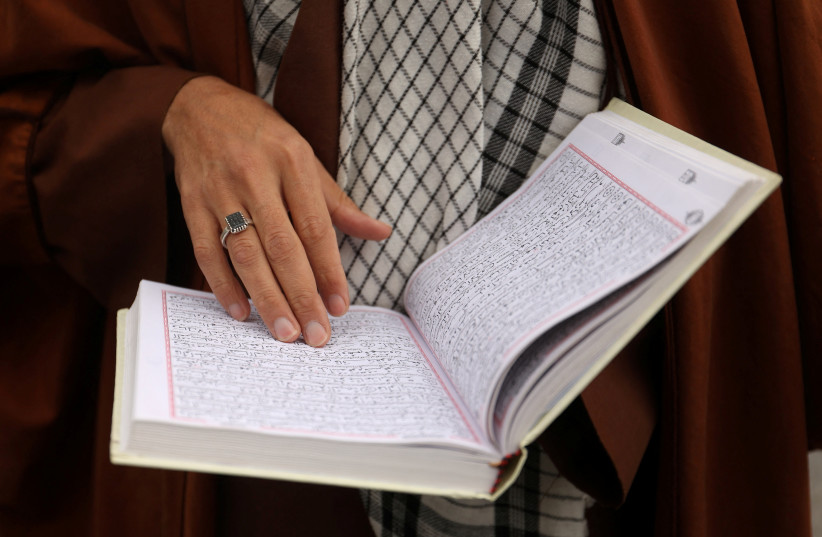Dr. Andrew Bostom, a retired professor of medicine at Brown University and a renowned critic of Islam, has published several works tracing the historical roots of antisemitism within Islam. According to Bostom, the antisemitism we are witnessing today is not a novel phenomenon and did not begin with the establishment of the state of Israel in 1948.
Historical records reveal that when the esteemed polymath and writer Abu Uthman Amr ibn Bahr al-Kinani al-Basri, known as al-Jahiz, died in 869, he left behind works that explored the political and religious undercurrents of his era. Al-Jahiz was commissioned by the bigoted Caliph al-Mutawakkil, notorious for his suppression of the brutal Mutazilite movement and his return to a more traditional, revelation-based Islam to compose an anti-Christian invective, motivated by the perceived threat from neighboring Christian territories.
While al-Mutawakkil himself did not perceive Jews as a threat, he noted that the Muslim masses harbored more animosity toward Jews than Christians.
In his work, al-Jahiz examined the reasons for this. He referenced Quranic verse 5:82, Muhammad’s interactions with the Jews of Medina, and the anti-Jewish themes in the Sira – the early biographies of Mohammed. Al-Jahiz considered verse 5:81, which suggests that Jews harbor the greatest hatred for Muslims, as a significant anti-Jewish motif. His contemporary, al-Muhasibi, who died in 857, corroborated this view, attributing this resentment to the Jews’ rejection of Mohammed’s religious message.
A review of other Quranic statements regarding Jews suggests that the primary antisemitic motif is found in verse 2:61 of the Quran and reiterated in verse 3:112. Both verses accuse Jews of killing prophets and defying Allah’s will, resulting in eternal condemnation. Verse 2:61 states that “shame and misery” are “stamped upon them.” This condemnation is reinforced by verses such as 5:60, describing Jews’ transformation into apes and pigs, and verse 5:64, which accuses Jews of spreading war and corruption – a profound lie echoed in the Protocols of the Elders of Zion.
Palestinian Authority head Mahmoud Abbas cited this verse in a 2007 speech against Israeli Jews, illustrating the enduring power of Quranic statements.
The impact of historicity on collective consciousness
Historicity can be deeply ingrained in a people’s collective consciousness. Fears of threats from racial or religious groups often originate from territorial claims, individual biases, imagined rejections, or even delusional beliefs. While most scholars agree that the earliest roots of antisemitism are found in Catholic doctrine, there is also a long history of hatred toward Jews in the Islamic world, likely for similar reasons.
This explains the Iranian Shia belief. With its desire for an international caliphate is its highest goal, the Jews must be eliminated, converted, or become dhimmi (second-class citizens), and after the Jews, Christians will face the same fate. It appears that the Sunni belief in a caliphate is less aggressive and based more on a consensual approach to change.
It is therefore no surprise that Hamas chief Yahya Sinwar, an Iranian proxy leader recently stated in correspondence with other Hamas leaders that the more Palestinians die, the greater Hamas’ ability to outlast Israel. Sinwar and his followers believe that they are waging a permissible terror campaign, justified by their view that their death cult is engaged in a religiously sanctioned battle, regardless of the casualties.
Similarly, condemning Israel for death rates that cannot be confirmed and Hamas’s use of civilians to hide behind and use for propaganda, as well as the very real possibility that United Nations workers are Hamas operatives are clear injunctions against those who support a ceasefire that Hamas continues to reject.
Unfortunately, media biases, including detestable attempts at equivalency, exacerbate this millennia-old hatred. Media is used by Hamas, Hezbollah, Iran, and even university professors funded by Qatar to spread this hatred.
Antisemitism is reflexively justified when leading media sources accept the death and injury claims of Hamas without verification or by falsely depicting the rescue of hostages as a hostage “release,” among other distortions. Similarly, social media is used by bots and Islamic fundamentalists to spread further hatred.
As some have noted, we are experiencing a level of antisemitism reminiscent of 1938, and the hatred is growing.
What Western countries cannot understand are the enduring roots of antisemitism within Islam, reinforced by historical, religious, and media narratives and inspired and perpetuated by the death cult that is the Islamic Republic of Iran and its proxies that pose a significant challenge to peace and coexistence in our time – and work on heightening antisemitism worldwide.
The writer, a PhD, is a fellow of the American Psychological Association and an APA Presidential Citation awardee recognized for his work in trauma, abuse, and resiliency. He is the director of ADC Psychological Services in Netanya and Hewlett, NY, and is on staff at Northwell, New Hyde Park, NY.

